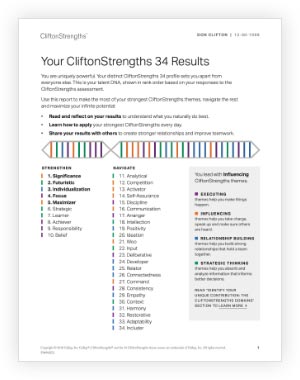It's time to decide where you want to lead your organization in 2019.
How can you build on last year's success? Where's the point of greatest leverage in your company's culture? What's the best return on investment when it comes to human capital and talent management? What organizational blind spots are your biggest threats?
Gallup knows more about managers and the workplace than anyone else in the world. In 2018, Gallup experts studied everything from the gig economy to employee burnout to employer branding.
What we discovered is transforming our clients' workplaces and taking employers to the next level using a scientifically rigorous approach. Interested in tapping our expertise?
Here are 10 highlights from Gallup's workplace analytics team in 2018:
1. Leaders need to understand and improve the manager experience at their company.
Being a manager has its benefits, but it can also be a challenging role within an organization. Managers have more authority, but they can also feel more lost.
Managers report being less clear about expectations and experiencing more stress than those they manage.
Considering managers have high influence on their teams -- they account for at least 70% of the variance in team engagement -- their own experiences with your company can affect your entire workforce.
Watch our on-demand webinar about the employee experience to learn more.
2. Your employee experience is your employment brand.
Today's workplace is more transparent than ever. That means that what employees experience within an organization can directly impact that company's ability to hire and retain great talent.
When only 12% of employees strongly agree their organization does a good job of onboarding, it's no wonder organizations have trouble engaging their employees over the long term.
The employee experience also includes how employees leave an organization. Employees who have a positive exit experience are 2.9 times more likely to recommend the organization to others.
However, most employees rarely have a meaningful conversation with their manager in the months prior to their departure. Fifty-two percent of exiting employees say their manager or organization could have done something to prevent them from leaving.
Download our perspective paper to learn how to design your employee experience.
3. Respect lays the foundation for an inclusive culture.
Creating a diverse and inclusive culture is a pressing issue for many organizations today.
Among U.S. workers who disagree or strongly disagree that they are treated with respect at work, 90% report one or more discrimination or harassment experiences at work.
4. How big is the gig?
Gallup has found a significant portion of American workers have a nontraditional relationship with their employer.
Twenty-nine percent of all workers in the U.S. have an alternative work arrangement as their primary job; 36% participate in the gig economy in some capacity.
Some workers are happier than others with this fluid employer-employee relationship. Independent gig workers (like freelancers) report more positive work experiences than contingent gig workers (e.g., temp workers).
Learn more by downloading our full paper The Gig Economy and Alternative Work Arrangements.
5. Employee engagement is on the rise.
A six-percentage-point improvement in the U.S. over the past decade equates to approximately 8 million more workers who are engaged at work.
That's 8 million more people who are energized to come to work each day and feel connected to and supported by their organization!
Read more about Gallup's research on this topic.
6. Gallup learning courses and programs are proven to increase employee engagement.
Our most recent analysis shows that Gallup's employee engagement clients who invested in Gallup's learning programs realized an average of 14-percentage-point increase in the proportion of their workforce who were engaged compared with an average increase of eight percentage points in companies who did not invest in learning.
For a company of 1,000 employees, organizations that invest in Gallup courses see an average of $1.8 million in productivity gains due to increased employee engagement in the first year.
Discover Gallup's transformational learning solutions.
7. CliftonStrengths -- why you need to know all 34.
Our meta-analysis of 34 research studies and 187,291 individuals examined the impact of feedback for all 34 themes compared with feedback for top five CliftonStrengths themes only.
Those who received feedback on all 34 themes realized a net gain of:
- 6 percentile points in employee engagement
- 7.8% higher sales
Learn more about CliftonStrengths 34.
8. You can't create an agile company without great managers.
Agility is more than a buzzword. When a company is truly agile, it can respond more quickly to business needs.
Unfortunately, less than 20% of employees in France, Germany, Spain, the UK, and the U.S. say they work in an agile company.
So, what does it take to create an agile company? It takes a culture that has the right mindset, tools, processes -- and managers.
Check out The Real Future of Work: Agility Issue.
9. Most employees experience burnout at work.
Burnout harms employee health, relationships, productivity and career development. And yet many employees regularly experience burnout on the job.
According to our analysis, 67% of employees say they are sometimes, very often or always burned out at work.
Those who very often or always experience burnout are:
- 63% more likely to take a sick day
- 23% more likely to visit the emergency room
- 2.6 times as likely to leave their employer
Discover the top predictors of employee burnout.
10. Performance management is broken.
This year we've been sounding the alarm: Traditional performance management is broken.
Fewer than three in 10 employees in the U.S., U.K., Spain, France, and Germany strongly agree that their performance is managed in a way that motivates them to do outstanding work.
The solution requires organizations to re-engineer their performance systems and train managers into coaches.
Read The Real Future of Work: Performance Issue and our perspective paper Re-Engineering Performance Management.






